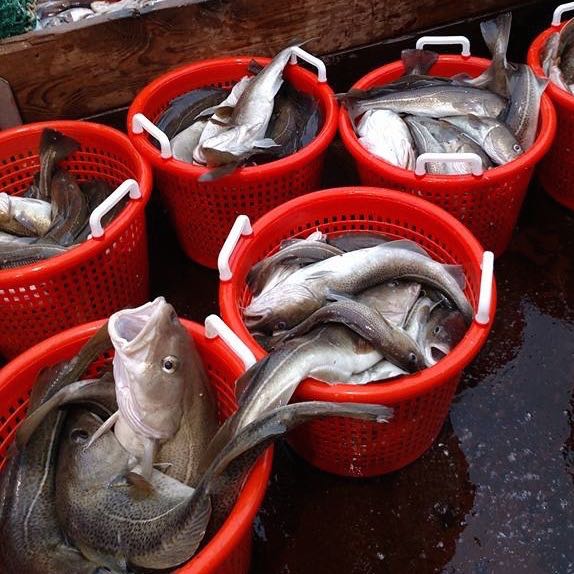Cod
Species Description
Atlantic cod Gadus morhua
also known as baccalao, scrod, morue
Wild.
Atlantic cod are bottom-dwelling, white-fleshed fish found from Greenland to North Carolina.
Atlantic cod can be gray, greenish, or reddish-brown, and they usually have spots. They have a pale line along their sides. Cod have a long, smooth body with a square tail and several rounded fins. Their top jaw sticks out past the bottom one, and they have a small whisker under their chin. They’re much longer than they are wide, and the widest part is just behind the head.
Season
September 1, 2025 – October 31, 2025 (inclusive).
For the most recent updates on fishing Atlantic cod in Maine waters, visit Maine Department of Marine Resources (DMR).
Status
The Gulf of Maine and Georges Bank stocks of cod are overfished and overfishing is occurring. Fishing is still allowed, but at reduced levels (Fishwatch.gov).
Regulatory Authority
New England Fishery Management Council Northeast Multispecies (Groundfish) Plan.
Harvest Method
Otter trawl, gillnet, and longline. See the vessel and gear guide for more information.
Recreational Harvest
Minimum size limit: 23 inches
Harvest limit: one fish per angler per day.
Health Benefits & Risks
Cod is low in fat and calories and is a good source of vitamin B12, but contains a lower amount of omega-3 fatty acids than other seafood choices. Cod is low in mercury and other contaminants.
Fresh cod should not be eaten raw due to the possible presence of naturally occurring parasitic roundworms. Cod worms are not harmful when fish is cooked properly to an internal temperature of 140°F, which normal cooking techniques generally exceed, or frozen if intended for raw consumption. A controlled food source means that farmed cod do contain worms.
View the 2021 US Food and Drug Administration’s fish consumption guidelines.
Buying & Preparing
Fresh cod should have a clean, briny smell, with white, translucent flesh. If purchasing whole fish, look for clear eyes and bright red gills, signs of peak freshness. In Maine, most cod and other groundfish are landed at the Portland Fish Exchange, though some local cooperatives and community-supported fisheries are beginning to offer cod directly to consumers.
Cod’s firm yet flaky texture makes it ideal for fish stews, pan-frying, or oven roasting. Its mild flavor pairs well with lemon, herbs, butter, or a light breadcrumb crust.
Recipes
Certifications & Verifications
Gulf of Maine Responsibly Harvested
Links
- Department of Marine Resources Groundfish Information
- Cod information from NOAA’s Northeast Fisheries Science Center
- Read Cod: A Biography of the Fish That Changed the World by Mark Kurlansky
- NOAA Fisheries Species Directory

